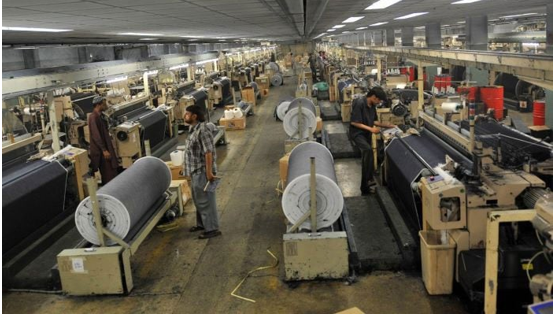INP-WealthPk
Ayesha Saba
Increasing value addition in manufacturing will boost export competitiveness and strengthen economic resilience. By leveraging natural resources and prioritising higher-value production, Pakistan can achieve sustainable growth, reduce its trade deficit and establish a robust industrial base to navigate economic challenges.“Structural shift in the manufacturing sector is essential to reduce Pakistan’s reliance on low-value exports.

Such a transition would not only fetch higher prices in international markets but also create jobs, attract foreign direct investment, and integrate Pakistan into global value chains,” Ahsan Malik, a former assistant director, Trade Development Authority of Pakistan, said. Talking to WealthPK, he underscored that value-added manufacturing could drive economic diversification, shielding the country from vulnerabilities associated with fluctuating global commodity prices. “Pakistan’s industrial base remains outdated, with low levels of automation and efficiency compared to regional competitors such as Bangladesh and Vietnam.
These countries have invested heavily in upgrading their manufacturing processes, enabling them to deliver products that meet international quality standards at competitive prices,” he maintained. Malik suggested that Pakistan must prioritise industrial modernisation through policies that encourage private sector investment in technology, skill development and research and development. He further said that reducing the cost of doing business was imperative. “This involves rationalising energy tariffs, simplifying taxation and ensuring consistent support for export-oriented industries.”
He also highlighted the importance of regional trade agreements, which could open up new markets for value-added Pakistani products, particularly in the Middle East, Africa and Central Asia. Usman Qadir, a senior research economist at the Pakistan Institute of Development Economics, said an increase in exports by adopting the latest technology could lead to economies of scale for the industry. “Enhancing the scale of production could help overcome the issue of trade deficit. Industry needs to increase its production to meet the demand of foreign buyers.”
He said that Pakistan’s exports were limited to the US, China and European countries. According to TDAP, the US, China and the UK remain the top export destinations for Pakistani products. “The government should formulate effective policies to enhance exports. The government must collaborate with industry to identify key sectors for value addition and provide incentives tailored to their needs. This includes launching financing schemes for small and medium enterprises, which often lack the resources to adopt advanced manufacturing techniques,” he said.
Experts also advocate establishing export processing zones with world-class infrastructure to boost manufacturing efficiency and attract foreign buyers. According to the monthly economic outlook of the finance ministry, large-scale manufacturing sector’s growth slightly declined by 0.8% during the July-September period of FY25 against the contraction of 1.0% over the corresponding period of last year. On a month-on-month basis, the LSM sector registered a modest growth of 0.5% in September 2024, indicating a slight recovery, although year-on-year, it contracted by 1.9%.
Credit: INP-WealthPk













